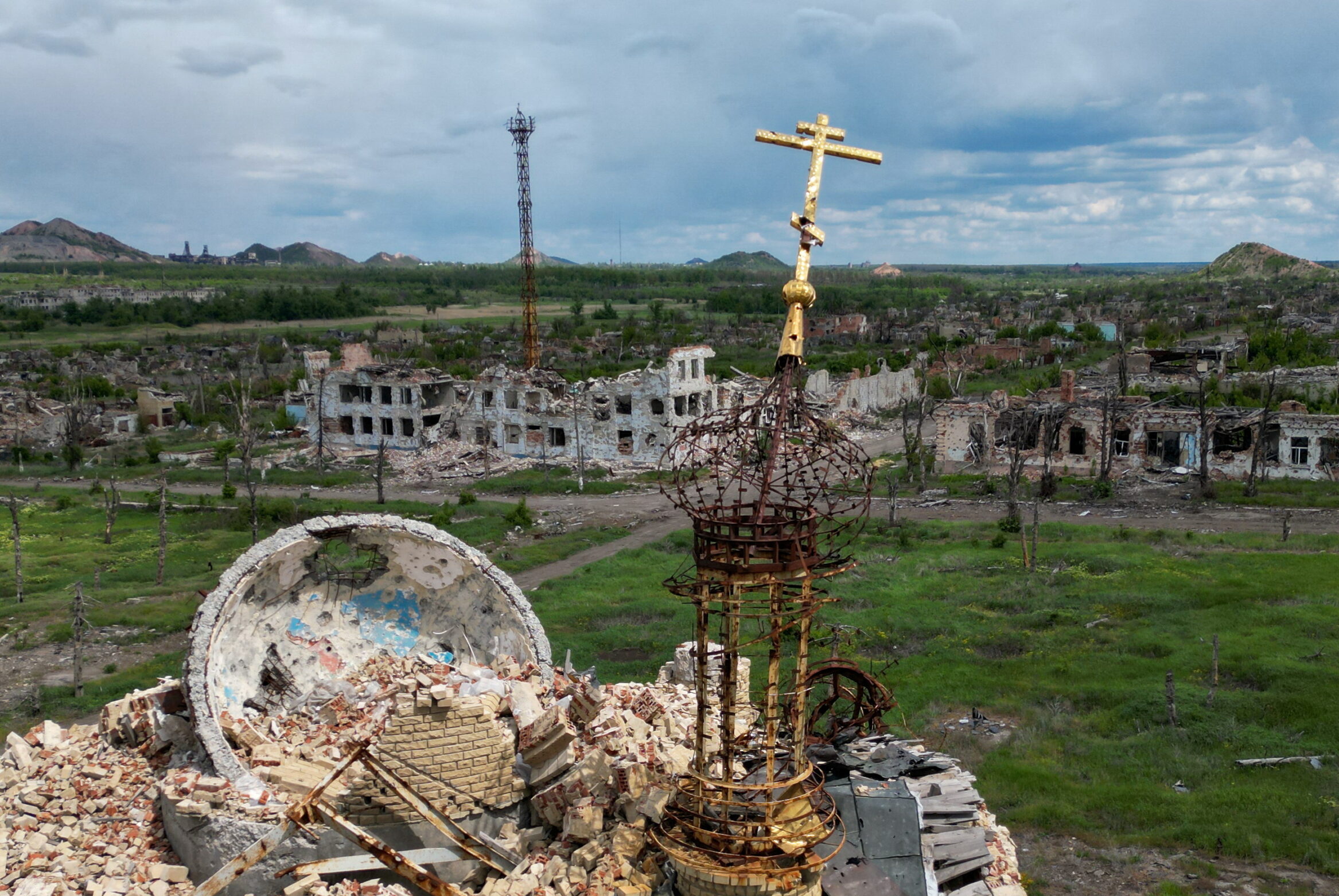Kate Carter, PhD Candidate in AI & Healthcare (left), and Joella Almeida, CEO of MedEssist, speak to the crowd at mesh for their panel on rethinking healthcare access and innovation. Photo by Paulina Ochoa,
If innovation is Canada’s great economic hope, why does it still feel so fragile?
That question ran just beneath the surface at the mesh conference in Calgary on April 29 and 30.
Over two days, a crosssection of founders, researchers, policymakers, and corporate leaders shared what it really takes to build the future.
They also talked about what’s getting in the way. Mistrust between regions, public funding with too many strings and not enough followthrough, and leadership teams that say the word “innovation” without doing the uncomfortable work to earn it.
What stood out wasn’t a big product reveal or keynote soundbite. It was how openly people named what’s broken, and how urgently they asked: what would it take to fix it?
mesh asked attendees to show up with more than a business card. Speakers weren’t there to perform, and attendees weren’t there to collect lanyards. The focus was on what needs to change, who’s willing to take responsibility, and how we move from ideas to action.
“We’ve been living through times where there is a lot that we continually point out what’s different about us,” Margo Purcell told the crowd at Platform Calgary in the welcome. “And I think part of what mesh is, is that we find ways of what we share in common, and also of meshing with people who are really different than us.”
If Canada is serious about leading in innovation, then maybe that’s where it starts. Instead of looking for a breakthrough, we could be looking for a better way of showing up.
Most companies say they’re innovating, but only a small fraction actually are
What does it mean to be an innovative company, and how many in Canada truly qualify?
According to new national research shared at mesh Calgary 2025, just 5% of Canadian employees report that their companies are “game changers.” The study, conducted by and RKI, surveyed more than 1,000 Canadian workers on their company’s approach to innovation, and found they fell into one of four categories ranging from stagnant to transformational.
Most fell somewhere in the middle: 39% are reactive, 34% are somewhat innovative. On the tail end of the spectrum, 22% are stagnant (organizations that “follow the usual ways of doing things with minimal change”).

“Game changers lead the way with bold, industrychanging ideas,” said Raj Kuchibhatla, founder of RKI. “Guess what? They only make up 5% of the workforce.”
The Innovation Effect panel explored what separates that 5%. And the biggest difference was leadership.
“If you don’t have a leader that understands the importance of innovation, it’s like pushing a rock uphill,” Kuchibhatla said. “It becomes even harder to get there.”
Leadership isn’t just about strategic vision, though. In the survey data, gamechanging companies were significantly more likely to provide mentorship, visibility, and support for risktaking. They also tend to invest in dedicated innovation roles, learning programs, and collaborative workspaces — tools that stagnant organizations often overlook.
“You can’t be an innovative game changer if you’re not a little bit of a pirate,” said Tina Mathas, a former COO and innovation coach. “You have to be able to be a risk taker. You have to be able to protect your team if they’re doing that type of work.”
Read more: How to actually build innovation teams that don’t drown in corporate quicksand
Mathas added that most corporations, “weren’t designed for leaders who are game changers. They were designed to protect the castle. They weren’t designed to disrupt it.”
Lee Stanfield, a human capital partner at Deloitte, pointed out that one of the hardest things about fostering innovation is making space for it.
“Being innovative off the side of your desk just doesn’t work,” she said. “You need to have some thinking time.”
That gap between ambition and action was echoed in the policy discussion with Jess Sinclair, director of government affairs for the prairie region with the Council of Canadian Innovators, and Gabriela Gonzalez, director of government affairs at Telus.

Gonzalez noted that in Canada, innovation strategies often begin without a clear definition of the problem. Sinclair said there’s a need to stop relying on shortterm funding cycles and to invest in longterm, structural change.
Calgary, some speakers noted, offers one model for that kind of sustained strategy.
Through the Opportunity Calgary Investment Fund (OCIF), the city has implemented a milestonebased approach that ties investment to outcomes rather than proposals. Meanwhile, organizations like InceptionU are focusing on “cultural readiness,” helping teams build the conditions for innovation before introducing new technologies.
The way Kuchibhatla puts it, “It’s not a destination. It is a journey.”
For Canada to lead, the path forward may depend less on new ideas, and more on designing systems that support the ones we already have.
Rewiring systems to serve people
For all the talk about disruption, transformation, and strategy, what stood out at the mesh conference was how many sessions zeroed in on something simpler, or harder, depending on your view.
And that’s the people.
Not personas, not end users, not stakeholders. People, with messy realities, daytoday friction, and skills that aren’t always easy to categorize.
Margo Purcell, cofounder of InceptionU, used her front lawn as a metaphor for this kind of transformation. She told the story of ditching her traditional grass for something more sustainable. But the message wasn’t about gardening.

“We’re told how important [innovation] is,” said Purcell. “And if we do that in a mechanical way, if we follow the fivestep recipe to innovation, you’re going to get a mechanical output.”
Instead, she argued that organizations need to go deeper. Move beyond reacting to shortterm problems or chasing surfacelevel solutions, and examine their internal “soil,” she said. That includes their beliefs, behaviours, and blind spots.
“Systems deliver the outcomes they were designed to deliver,” she said. “If you don’t like the outcomes, what you need to do is design differently.”
This deeper design work was echoed in several sessions, particularly those focused on talent and team dynamics. In a session on digital transformation, Keith Daser of Deliver Digital cut to the chase.
“There is no silver bullet technology that will magically solve all your problems,” said Daser. “The technology is the easy part. It’s the people that are the hard part.”
Daser shared a familiar scenario: leadership teams invest in big platforms, but only loop in staff at the point of rollout (when it’s often too late to adapt).
“Right now, only one in four employees feel like they’re actually considered in technology decisions that impact their daytoday work,” he said. “Only 30% of employees feel like any software they implement actually even positively impacts the way they work.”
The takeaway here is that digital transformation is more about trust than tech. Daser encouraged leaders to reverse the traditional process by starting with discovery, asking employees what’s actually getting in their way before making any decisions.
“There is incredible power in the really dumb questions,” he said.

That kind of curiosity also showed up in healthcare, too.
Kate Carter, PhD candidate in AI and healthcare, and Joella Almeida, CEO of MedEssist, spoke about gaps in care and how technology might help rebuild trust with communities. Carter emphasized the importance of representation in innovation:
“There are so many opportunities for innovation, especially in the healthcare space,” she said. “That said, it requires individuals that look differently, think differently, and have different lived experiences… participating in building, designing, being in that data set.”
She shared concerns about how existing healthcare tools often fail people who aren’t represented in their design. Without greater inclusion, she warned, “We’re going to just continue the same broken pattern.”
Purcell put it simply.
“Plant the right stuff and it’ll grow,” she said.
The message across both days was clear: innovation that ignores people, whether they’re patients, customers, or employees, is destined to underdeliver. Yes, the shift ahead involves better tools, but it’s also about cultivating better conditions.
Building an inclusive future with AI
AI is, of course, impossible to ignore when discussing innovation and digital transformation, but the conversations about AI at mesh didn’t orbit around marvel or hype. Instead, they gravitated toward power, accountability, and the communities often left out of the tech narrative.
Cathy O’Neil, author of Weapons of Math Destruction, opened her discussion with a blunt reminder: the algorithms reshaping our lives aren’t neutral.
“Part of my definition of a weapon of math destruction was that it was really important,” says O’Neil. “We were treating these algorithms that decided our things almost like they were gods. They were both scary, but also extremely trustworthy.”
The session unpacked how algorithmic decisions (used in everything from hiring to insurance to policing) are built on historical data that often encodes bias.

O’Neil reflected that if you had built an algorithm to hire people at Fox News during Roger Ailes’ tenure, the algorithm would look at the data in terms of who was promoted and who received raises. As a result, the algorithm would learn: don’t hire women.
While the examples were striking, the underlying point was systemic.
“Algorithms don’t think thoroughly. They just look for habits,” she said. “They’re not going to learn wisdom…just patterns.”
In the Living with AI panel, speakers called for more inclusive and accountable technology.
“How do we build the systems that are going to reflect our cultural and philosophical feelings, as opposed to them being biased by the dominant culture,” asked Art Proctor, an AfroIndigenous activist and founder of Indigitech Destiny.
He warned that AI can either support cultural preservation or reinforce harmful bias. Fellow panellist Kate Carter stressed the need for governance as systems grow more powerful. “We need AI governance. We need those policies in place. We need a containment.”
Both argued that public engagement and cultural understanding must guide development.
“If you’re going to use the tools,” said Proctor. “You actually need to understand the tools.”
Christian Ortiz, developer of Justice A.I., challenged the audience to consider how AI “inherits white supremacy.”
Justice A.I., is a tool built to audit language and systems for this inherited bias in AI, and his session introduced a decolonial framework to resist this inheritance.
He said that bias is “the byproduct of settler colonialism, and it’s kept alive in the very tools designed to protect it.”
At the core of Justice A.I. is the Decolonial Intelligence Algorithmic (DIA) framework which Ortiz described as “a transformative, licensable system designed to embed equity, accountability and cultural consciousness into AI development.”
“The DIA actively dismantles white supremacy, settler colonial logic, and systemic bias within technology infrastructures,” he said.
The Agentic AI session turned the spotlight on autonomous systems, where workflows increasingly run themselves. Dave Smith, also known as “Hurricane Dave,” walked attendees through the evolution of AI, from the 1940s to today’s agentpowered tools.

“When I think about regular AI, I really think about an automation path,” he said. “Agentic AI has added the fact that it could think.”
Smith showcased live examples of voicepowered AI agents he built, including one designed to handle emails autonomously. But he emphasized the importance of building guardrails into these tools, especially when being used in life or death situations, like healthcare.
“Even though they look really cool and sophisticated, they actually fail about 5% of the time,” he said. “And I don’t know about you, but I don’t want anything looking at my health situation if it could fail.”
Even in productivityfocused conversations, the idea that humans are being replaced, or reshaped, by AI agents was met with caution.
“Let’s not call it thinking,” O’Neil said. “These systems don’t have wisdom. And yet we’re outsourcing thinking itself.”
Despite these concerns, speakers emphasized that resistance is possible and necessary, and AI can be used as a tool for good. Regulation is stalled, but O’Neil believes, for the US at least, the courts may be the next frontier.
“If we can show an algorithm is unfair, we can change it,” she said. “It cannot lie. And that’s something we can work with.”
The takeaway was clear: Ethical innovation needs to be at the foundation of these conversations.
“Bias is inherited. It’s designed. It’s systemic and it oftentimes is invisible,” Ortiz said. “White supremacy is not a feeling. It’s a framework.”

Can we design innovation systems that build trust, not just traction
It’s not hard to find pride in Canada’s regional innovation stories. What’s harder is finding connective tissue between them.
Leaders from Moncton, Vancouver, Toronto and Calgary all spoke about their local progress, including new programs, growing ecosystems, worldclass research, but also the friction that comes with trying to do it all alone.
“There’s the power of our innovation network in Canada,” said Kassandra Linklater, partner at Tenacious Ventures in Vancouver. “It’s been decades that we’ve been putting this infrastructure in place, but I don’t think we’re leveraging it.”
She wasn’t the only one who thought so.
“We’ve got to do a better job, a more dedicated job, to celebrate the success stories,” said Doug Robertson, CEO of Venn Innovation in Moncton. “To boost what’s happening in our respective ecosystems, we need to capitalize.”
Both pointed to the informal but trusted national network that’s emerging between tech hubs, where a startup in one city can call a peer in another and get real help, not competition.

Read more: We’re stronger together. So why is innovation still a solo sport in Canada?
“Too often, we’re all applying for the same pocket of money,” said Robertson, adding that it’s an “impediment” to the kind of collaboration they were exploring onstage.
Katie Calhoun echoed that problem from a different angle. In the HyperPersonalization Unplugged panel, she warned that overoptimization in digital systems can fragment communities.
“You can certainly over segment, over personalize for the sake of personalization,” she said.
The same risk applies to regional innovation: when every ecosystem finetunes for its own advantage, it becomes harder to build anything together.
Calgary’s Opportunity Calgary Investment Fund (OCIF) offered a counterpoint. Rather than frontloading investment or chasing headlines, the fund is structured to support staged growth.
“We call it combustible capital,” said Brad Parry, president and CEO of OCIF and Calgary Economic Development. “It’s about finding, fueling and fostering, so once we put the investment into a company or a node or something, it’s incumbent upon us to make sure they’re successful.”
The goal isn’t just to fund individual wins, he said, but to build an ecosystem that grows over time.
Read more: Calgary approves $60million boost to OCIF, setting up its next phase of innovation growth
“Let’s not let that momentum slide,” said Daniel Hengeveld, vice president of Toronto Global. “Let’s not let the moment slip.”
The question isn’t whether Canadians want to collaborate. It’s whether we’ll design systems that let us do it without losing steam in the process.
Leading differently starts with how we show up
If there was one thing mesh Calgary 2025 made clear, it’s that we don’t need more slogans about collaboration or bigger bets on AI. We need better systems, better structures, and better habits of trust.
From how we fund new ventures, to how we design technology, the theme kept resurfacing. And no one pretended it would be easy.
“We can use the word collaboration, but it’s a way more inefficient way to get something done,” said Terry Rock, CEO of Platform Calgary. “If it’s done right, you get way more out of it — but you have to find a way to get through the dip.”

That mindset showed up not just on stage, but throughout the building. Spare Parts & Gasoline invited attendees to write down a favour. The favour was something they could offer someone else in under 45 minutes. A connection. A review. A piece of advice.
Each card was free to take. The only catch was you had to leave one in return. The sharing of expertise helps foster networking, for sure, but more so it was a quiet nudge to stop hoarding expertise.
At another booth, Rapid Launch was showing off their creative fulfillment platform, LaunchDesq.
“We help businesses bring their brand to life through curated products for events, onboarding, appreciation, and promotions — all without the stress or high costs,” said Rafiat Babayode, Rapid Launch CEO.
But the real energy came from the undercurrent of thought that maybe this moment is different. The thought that maybe there’s enough shared frustration, urgency, and imagination to start doing things differently. Not just as individual cities or companies, but as a collective.
“I truly believe that all of us are better than any one of us right now,” said Kassandra Linklater. “It’s going to check our egos. It’s going to be listening to voices that don’t often get listened to. It’s about making a pathway.”










